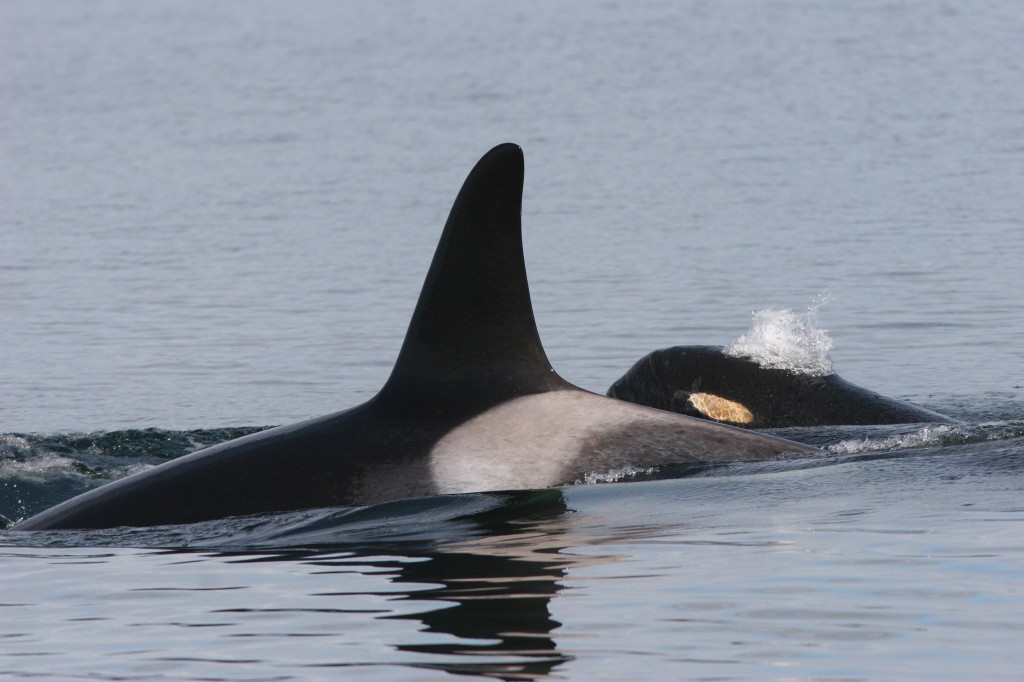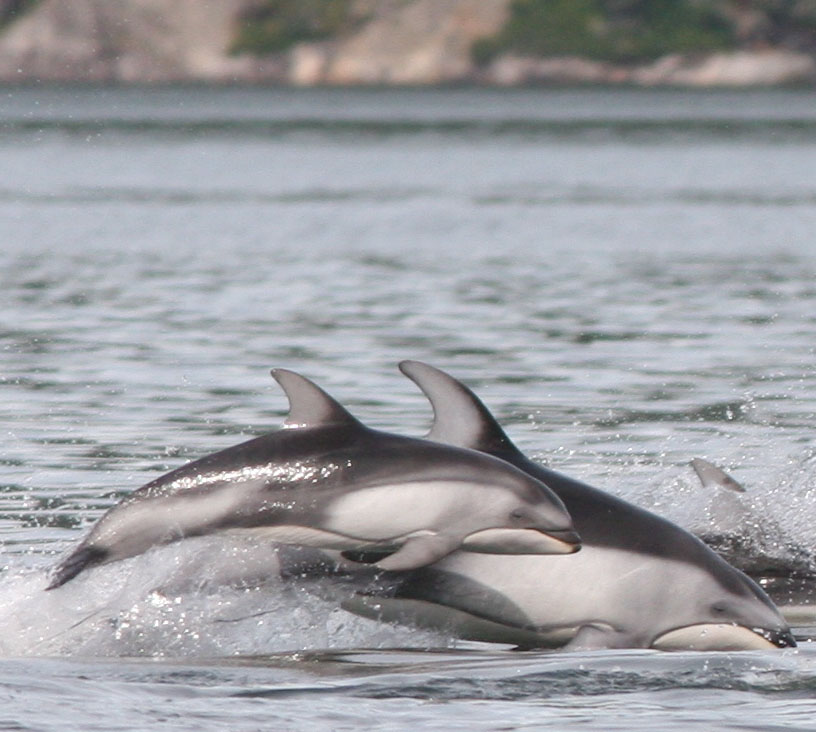
I’m not a mom (yet), but being in the field with whales and dolphins for my PhD research is making me think a lot lately about motherhood. The killer whales (orcas) that we study stay with their mothers their entire lives: they live in a matrifocal society. That’s rare. Sure, when the daughters grow up and have whale babies of their own, they often travel in their smaller family groups and spend days apart, but what’s unusual is that even sons stay with their mums their entire lives. That’s unheard-of in any other mammalian society. We’re not sure what advantage this social structure offers to killer whales. Maybe mothers pass on critical information, and serve as archives of lessons learned through time on where to find salmon in lean years and where the best rubbing beaches are.
This week we attended a fantastic lecture by Jane Goodall here in St Andrews. The science was interesting, but we were most struck by the story of how Jane Goodall became Jane Goodall. As Dr. Goodall recounted her incredible story of becoming first a primatologist and then a force of nature, she attributes her path and success to the support of her mother (we do too!). Chimpanzees, Dr. Goodall reminded us, also have societies that rely on mothers to teach offspring, and nurture and protect young chimps.
Moms know stuff. In one ‘green mommy blog’, Eco Child’s Play , the author points out the possible dangers to your baby (decreased IQ, increase in attention-deficit disorder, cancer, endocrine disruption) from using products loaded with chemical flame retardants. These contaminants are not good for human babies and, as it turns out, not good for killer whale babies either. Our colleague, Dr. Peter Ross has found very high levels flame retardant chemicals in the blubber of killer whales.

Alexandra Morton began to notice Pacific white-sided dolphins in her study area in the late 1980’s. If you open any guidebook, they’ll tell you that Pacific white-sided dolphins “belong” way offshore, but after a decades-long absence, these dolphins came into the inlets of mainland BC in groups of hundreds. The odd thing was, there were no babies. Just adult dolphins. Then, in 1995, the first young dolphins began to appear. Were other dolphins scoping out peripheral, new habitat before letting moms and babies know that it was safe? These days, I see quite a number of mothers and babies. Even newborns. In fact, these dolphins may actually be giving birth in the inlets right in our neighborhood. That’s quite a surprise for a species perceived as a resident of the high seas. This is the phenomenon I want to study next.
In the meantime, knowing this makes me want to protect dolphin habitat from noise, nets, pollution and plastic. Are these my maternal instincts kicking in?
